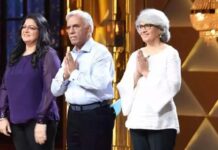T. R. Subba Rao Biography: Talukina Ramaswamayya Subba Rao (1920–1984), also known as TaRaSu, was a Kannada-language novelist and scholar from India. He is regarded as a precursor of the Navya literary movement in Kannada. Posthumously awarded the Sahitya Akademi award in 1985 for his novel Durgashtamana, for which he is best known, he obtained the award posthumously.
T. R. Subba Rao Biography
| Full Name | T. R. Subba Rao |
| Occupation | Writer |
| Died: | 10 Apr 1984 |
| Date of Birth | April 21, 1920 |
| Place of Birth | Karnataka, Harihar, Davanagere district, Malebennur |
Early Life
TaRaSu was born on the 21st of April, 1920 in Malebennur, Karnataka, India. His father was a jurist in the city of Harihar, and his mother’s name was Seethamma. His progenitors were from the Karnataka district of Chitradurga and the village of Taluku. He composed his first story, Puttana Chendu (Putta’s ball), to win a bet against his uncle TS Venkannaiah, who contributed selflessly to the Kannada language by promoting many prominent authors. At the age of 17, he joined the Indian freedom movement and toured the Chitradurga district villages singing patriotic songs and delivering speeches in support of independence. While delivering one of his speeches in Bagur village, he was apprehended and imprisoned.
Ramaswamaiah enrolled his son at Bangalore’s National School out of concern that he would miss out on education if he joined the liberation movement. After concluding his secondary education, TaRaSu enrolled in a Shimoga college. After finishing his junior intermediate education, he enrolled in a Tumkur college to conclude his senior intermediate education. However, due to the imprisonment of Mahatma Gandhi and others during the Quit India movement, students began to boycott classes. His companions and he began making plans to join the movement. This was discovered by the police, who apprehended and imprisoned TaRaSu. December 1942 was the month of his release. He determined that he would not continue his education until India achieved independence. Early in his life, he was an unbeliever, but he eventually became a believer.
Hassanal Bolkiah Biography: Age, Birthday, Career, Assets, Personal Life, Net worth
Family
TaRaSu hails from a family of writers. His niece Vishalakshi Dakshinamurthy is a renowned Kannada novelist and writer whose film Jeevana Chaitra was based on her novel and starred the well-known Kannada actor Rajkumar. Additionally, TaSu Sham Rao was related to TaRaSu.
Career
As a journalist
TaRaSu moved to Bangalore in 1942 and began working as a sub-editor for the Kannada publication VishwaKarnataka, earning Rs. 25 per month. Throughout this time, he wed Ambuja. He later worked for the newspapers Prajamatha, Vahini, and Navodaya. In addition, he worked for the Prajavani, Mysuru, Kaladoota, and Vicharavani newspapers during his journalism career.
As a Writer
TaRaSu was initially influenced as a writer by the Pragatisheela works of the Kannada scholar A. N. Krishna Rao. His early works, including Purushavatara and Munjavininda Munjavu, were written in the pragatisheela style. These works focus primarily on the problems encountered by the poor and the lower castes of society. Infrequently, he also produced non-genre novels, such as Chandavalliya Thota, which was based on a Gandhian theme of rural life in India. Masanada Hoovu, which discusses the plight of prostitutes, and Hamsa Geethe, which describes the life of a musician during the transfer of Chitradurga from the Palegars to Hyder Ali, are two of his most celebrated works. Both of these novels have been adapted into Kannada films. Basant Bahar, a Hindi film, was based on Hamsageethe. It was selected as a textbook for graduate courses.
The most notable of TaRaSu’s historical novels are Durgaastamana (fall of the Durga Fort), which earned him the Sahitya Akademi award in 1985. This was his final novel, and it describes the defeat of the Chitradurga Palegars at the hands of Hyder Ali. Kambaniya Kuyilu and its sequels Tirugubana and Raktaratri are his other historical works based on Chitradurga’s history. Additionally, he authored the novel Shilpashree, which is based on Chavundaraya, the individual who commissioned the statue of Bahubali at Shravanabelagola. S. Srikanta Sastri, an eminent Indian historian, provided a significant portion of the historical research for his numerous novels for nearly two decades.
Sastri even penned an erudite and scholastic introduction to one of Ta. Ra. Su.’s celebrated works, “Nrupatunga.”TaRaSu experimented with numerous narrative styles and was the first Kannada author to use stream-of-consciousness writing. In his novels, including Rakta Tarpana, he utilised the Indian independence movement as a backdrop.
T. R. Subba Rao: Facts
The following are a few noteworthy facts about T. R. Subba Rao:
- The first Indian to earn a PhD in economics from the University of Chicago was T. R. Subba Rao.
- He was a member of the Indian delegation to the 1944 Bretton Woods Conference, which resulted in the formation of the International Monetary Fund and the World Bank.
- In 1969, Subba Rao, as Governor of the Reserve Bank of India, introduced the first bank nationalisation scheme in India, which led to the nationalisation of 14 main commercial banks.
- During his time as Governor of the RBI, he was a staunch supporter of the Green Revolution in India and played a vital role in fostering agricultural development.
- Subba Rao was a prolific author who authored a number of books on economics, including “Economic Growth in India: History and Prospect,” “Banking and Monetary Policy in India,” and “Economic Policy for India.”
- In 1967, he received both the Padma Vibhushan and the Ramon Magsaysay Award for government service.
- Subba Rao was a firm believer in the efficacy of education and actively promoted education and research in India. He is commemorated by the T. A. Pai Management Institute in Manipal, Karnataka.




